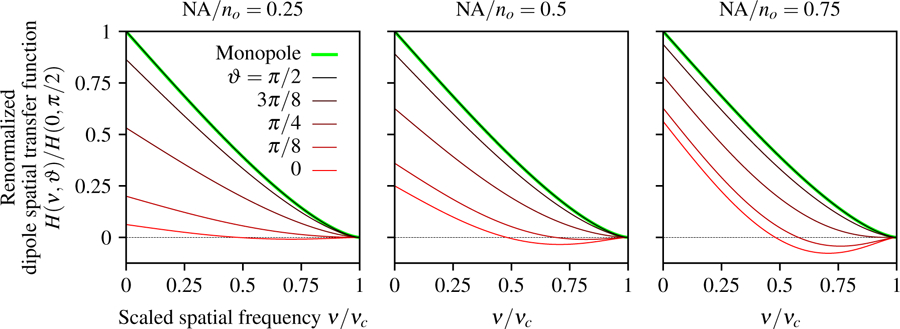Fig. 5.

Dipole spatial transfer function as a function of the scaled spatial frequency ν/νc, the dipole inclination angle ϑ, and NA/no. For small numerical apertures (left) the dipole spatial transfer function for axial dipoles (red) is small compared to transverse dipoles (black), but the relative contribution of axial dipoles increases with the numerical aperture (see red lines from left to right). The spatial dipole transfer function of axial dipoles is negative at high spatial frequencies because the central minimum of the axial dipole point spread function corresponds to the position of the dipole. Equivalently, a high-spatial-frequency pattern of axial dipoles will generate an irradiance pattern where the minimum irradiance corresponds to the peak of the axial dipole emission density. Additionally, we plot the monopole transfer function (green) and observe that the paraxial monopole and dipole models are identical for transverse dipoles (the green and black lines are coincident).
